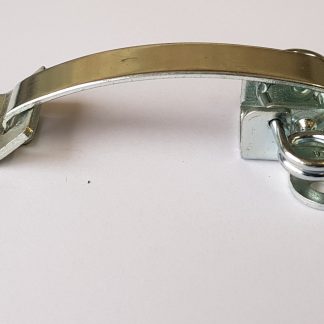‘How to Make Compost Step by Step’
Find out how to recycle your garden & kitchen waste
into green, natural rich compost in just days!

What is compost?
Compost is simply the natural organic material produced by the breakdown and decay of vegetable matter.
A layer of compost spread 5 to 10 centimetres on the garden as mulch will:
- Vastly improve the quality of the soil
- Act as a protective layer from the elements
- Increase the moisture retention, reducing the need for water
- Multiply the earthworm population by up to 10 times, thereby greatly increasing the soils aeration and nitrogen content.
- Significantly retard weed growth
How long does it take to make compost?
In just 14 days, our Rapid Compost Tumbler will convert a load of fresh organic matter into rich, crumbly compost ready to spread immediately onto your garden.
We have 2 different sizes of our Rapid Tumblers, depending on the size of your garden or household kitchen waste:
How do I use compost in my garden?

If you have a well-established garden, simply spread the compost on the soil to a depth of 5 to 10cm.
The compost nutrients will feed down into the soil.
Furthermore, the compost will be absorbed into the soil over a period of time by naturally breakdown and will provide food for the earthworms. This will aerate and fertilise the soil, adding body to sandy soils and breaking up clayey soils.
How to make compost step by step using our compost tumbler
Place your tumbler in a convenient area in your backyard or garden, then fill it with approximately:
- four parts fresh organic material with a high nitrogen content (lawn cuttings, leaves, weeds, prunnings, tea leaves, coffee grounds, or generally most organic material), and
- approximately one part dry material with a high carbon content (dried leaves, sawdust, wood shaving, shredded paper, straw etc).
Make sure to fill the Tumbler at least three-quarters full in one go. This will ensure that it will generate the right amount of heat to produce the required bacteriological breakdown. You do not need to add waste to it every day.
If the tumbler is only half full, it will not achieve the maximum effect.
- When ready to load the Tumbler, either shred this material or just pull it apart and load it into the Tumbler.
- To have an even mixture we would suggest loading one third of your mixture, rotate the Tumbler a few turns, add another one third, rotate the mixture, then the final third to fill the Tumbler.
- The fresher the material the better.
- The finer the material the better (if shredder is not available a lawn mower can be used to cut up weeds, leaves, prunnings etc.
- Generally the more lawn cuttings you have the better.
- Organic material in nitrogen such as manures and/or “Blood and Bone” may be added to enrich the mixture and accelerate decomposition.
- You do not add soil
- The mixture must be moist but not too wet. If after a day or two, moisture is draining from the bottom of the Tumbler, or the material is rolling up into large matted balls inside the Tumbler, the mixture is too wet and more dry material is needed.
Then, give you Tumbler 5-6 revolutions once a day. When standing, the hatch should be at the top.
- This aerates the mixture and distributes all the material through the centre heat core.
- The air vents will allow air to circulate through the material providing oxygen to the bacteria.
- There should be no bad odours or smells, and flies are not attracted.
- On the Deluxe models the gearing of the handle and chain drive to the Tumbler will provide an easy turning action and will not slip.
- After a day or two the material will subside to approximately two thirds, allowing the mixture to tumble freely and the air to circulate.
Within the first 4 days, the material will build up to approximately 60-70˚C, effectively deterring fly larvae and stopping germination of grass weed seeds.
After just 14 days you will have rich, natural, pleasant smelling, crumbly compost which you can empty straight from your Tumbler into a wheelbarrow for distribution onto your garden.

Any vegetable matter or prunings etc. that you accumulate during the 14-day cycle should be stored separately and not added to the load on a daily basis.
Vegetable scraps wrapped in newspaper will store effectively for the duration of the cycle.
The newspaper will also absorb valuable nutrients so they won’t drain away.


